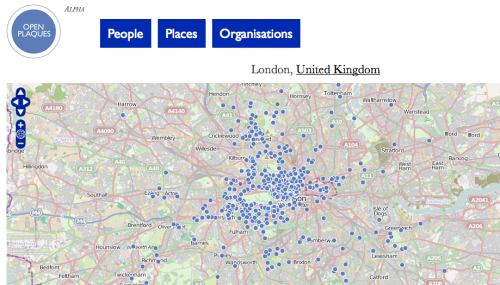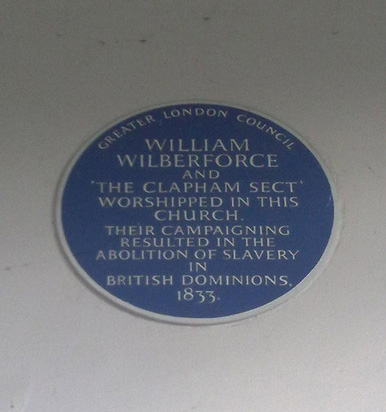Writing in the Telegraph last year, Stephen Fry reflected: “Many of us like to believe that we understand the point of history. We all pay lip service to the idea that yesterday makes today, but it is hard to make the imaginative leap that truly connects us to the past. It is as if we are forced to move forwards in such a narrow passageway of time that the act of stopping to look behind us is difficult.”
Fry surmised that the UK’s blue plaques – erected to mark the physical locations occupied by people from history who have left a notable mark on our culture – were a living corrective to this. But are they really? What if these inert short-form stories were re-animated by augmenting the physical markers with a layer of digital information that made looking back in time from the present day a far easier, richer and more immediate experience? Wouldn’t that be a greater step forward in terms of bringing history to life?
Even as Fry was writing this in June 2009, a project was already underway do just that – to open up that heritage and make it accessible, expanding the narrow passageway of time that Fry lamented.
Credit to kickstarting this goes to Frankie Roberto who came away from a conference on mobile learning for the museums and archives sector in January 2009 with a bee in his bonnet:
“You see them everywhere – especially when sat on the top deck of a double-decker bus in London – and yet the plaques themselves never seem that revealing. You’ve often never heard of the person named, or perhaps only vaguely, and the only clue you’re given is something like “scientist and electrical engineer” (Sir Ambrose Fleming) or “landscape gardener” (Charles Bridgeman).
I always want to know more. Who are these people, what’s the story about them, and why are they considered important enough for their home to be commemorated? I’d like to be able to find out all this, and to do so at the point at which I stumble across a plaque – which to me suggests something on a mobile platform.”
In the 15 months since, this desire for deeper and more accessible context to these static emblems has crystallized in the Open Plaques initiative. An open source community project; it is also community-driven by necessity, due mainly to the data surrounding the UK plaques being fragmented between hundreds of bodies, and not only inconsistent but sometimes totally absent.
It gathered momentum when Frankie’s early efforts caught the attention of Jez Nicholson, Simon Harriyott and Marvin Baretto who’d already (coincidentally) teamed-up to do a blue plaques project for the Open Hack London event in May 2009. So it happened that they prototyped a website that could pull this information together.
The Open Plaques service which emerged from this ad-hoc grouping (which I joined later last year) synthesises a number of tactics and workarounds to overcome the challenges it faces. As the plaques by their very existence are in public domain, Frankie has made a series of Freedom of Information requests for data and records of the plaques to several of the bodies that hold them, so they can aggregate them together and offer the data in standardised form for free re-use by others.
In turn, the already existent Blue Plaques group on Flickr proved useful and amenable, and the idea of using images from Flickr on the Open Plaques service gained an important leg-up when Flickr agreed to grant a “machine tag” option to photographs of plaques uploaded under a Creative Commons licence.
It’s remarkably simple and works like this: each plaque location listed on the Open Plaques database (which you can search on their site by name, place or organisation) has a number. When the number is added as a machine code in the tags of the corresponding photograph on Flickr by the user – and if the user gives the photo a Creative Commons licence – the image is pulled from Flickr onto the Open Plaques website. The service also allows geo co-ordinates to be imported.
The site itself is still in Alpha phase of development but is already substantially populated – with 38.44% of 2297 known plaques in the database now having a corresponding machine-tagged photograph.
The whole project is still in the earliest of stages. Making it fully functional and accessible on mobile devices still lies ahead. Any number of possibilities for what could be done going forward suggest themselves. But in the very act of pulling it together, it already bears the DNA stamp of what it could some day become. The plaques themselves encapsulate people-powered history: a history of action, ideas and invention. Open Plaques has the potential to transform them into a living resource – and make each one a porthole that helps us connect with, understand and traverse moments in place and time, just like Stephen Fry said.
Re-shaping historical interest points nationwide as dynamic experiences is a mammoth task but Open Plaques – which is unfunded and 100% volunteer based – is already gearing up for a productive 2010. In February, Simon and Frankie attended the first ever English Heritage conference on commemorative plaques (yes, they’re not all blue) to find out more about the organisation’s thinking and plans, and talk to people about the initiative. Simon also talked about the project at last week’s £5 App Meet in Brighton.
In the meantime, we need more people to help fill up the image database – yes that’s you Flickr users! – plus help with the technical development. Spreading the word also matters and you can stay in the loop by following Open Plaques on Twitter.
Any input is welcome. You can even source and suggest plaques that aren’t on the website’s (incomplete) list. So if you’d like to get involved in connecting past and present, and do some local or further-afield exploring in the process, visit the site’s Contribute page for more instructions, see Jez’s blog and the Open Plaques group for simple Flickr tips or get in touch directly, and lend a hand in joining the blue dots.
[UPDATE 12/5/10] We now have an Open Plaques blog and I’ve added my first post: Meet the time bandits.





